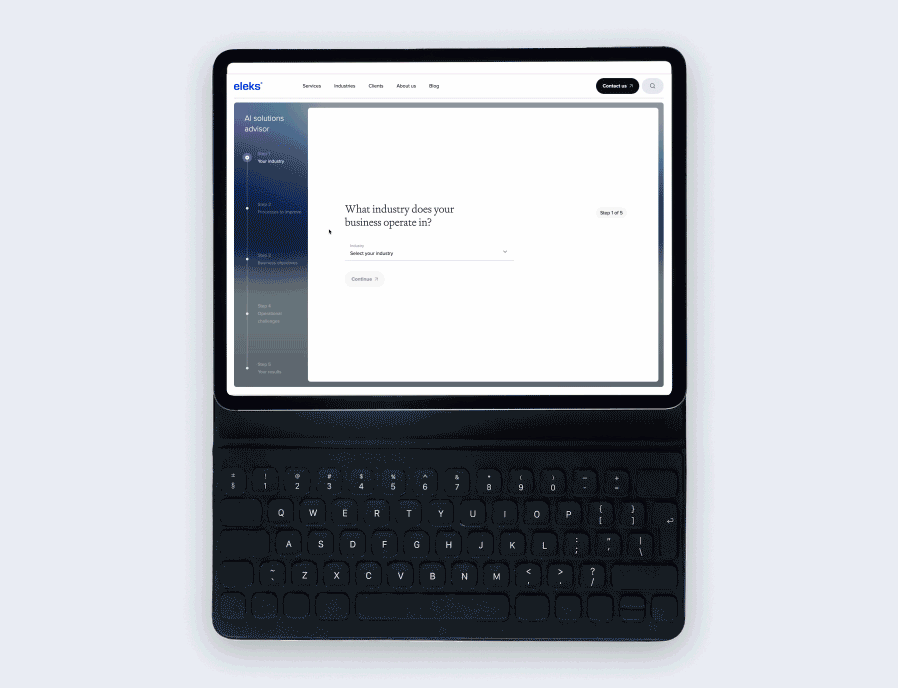Artificial intelligence has long moved beyond buzzwords in PowerPoint presentations. Today, companies are seriously exploring implementing AI with specific, practical objectives in mind: automating tasks, saving time, and reducing errors. Document workflow automation has emerged as one of the most common entry points for businesses starting with AI.
We spoke with Oleksii Zarembovskyi, a data engineer with years of experience integrating AI into real-world processes, who shared practical insights gained through implementation, not theory.

Background & experience:
Over 6 years of experience in the data engineering field. Oleksii leads a team of 15+ Data Engineers, with a focus on organisational and technical debt coverage, performance improvements, and best practices implementation.
What’s the usual starting point for integrating AI into document workflows?
Oleksii Zarembovskyi: It always begins with defining the goal. What exactly do we want from AI? A summary of a document? Extraction of key fields like dates, amounts, and vendors? Next comes understanding the type of documents – invoices, contracts, reports – and based on that, we choose the platform or model. Suppose the format is standardised, great. If not, we need more flexible solutions.
You shouldn’t use AI just because it’s trendy. You need a clear goal.
Have you ever had trouble extracting specific data?
OZ: Definitely. Dates can be a real challenge. If a document says “03/06” – is that March 6 or June 3? It depends on the region, and sometimes there’s no way to tell unless a human validates it.
Also, checkboxes and fields can shift. It means that even if data is being captured within the checkbox correctly and the model reports 95+% confidence, the checkbox position and its size might be incorrect. That`s why we need a human in the loop to validate the result, but the data might still be wrong sometimes.
Do you use more out-of-the-box models, or do you train your own?
OZ: Both. When working with standard documents, such as invoices, we often utilise pre-trained models, like those from Microsoft. But if a document has a non-standard structure or unusual fields, we need to acquire a dedicated AI engine from our vendor to train and adjust it to our specific needs.
Training time and data requirements vary depending on the platform. Microsoft AI Builder, for instance, can get started with just five samples per layout – pretty quick. But whenever a new format comes up, we retrain.

What does the testing and deployment process look like?
OZ: We follow a Scrum framework and use three environments: dev, test, and production. Once a solution is ready, QA engineers or business analysts test it. We monitor how the model performs: which fields it handles well, where accuracy drops. Based on that, we decide whether retraining is needed. Once everything is approved, we move to production.
How is the business user involved in the document processing process?
OZ: The point is that when we automate document processing workflows, we don’t remove the business user from the process. On the contrary, the expertise of the business user and their knowledge of the context are essential for validating the output and filling in any gaps.
Moreover, in document processing, the data lineage and auditability components are always critical, especially in cases of audits, reporting, or discrepancy analysis. And again, the business user plays a key role here, as they can validate the final result and compare it with the original document.
If you can avoid using AI, don’t use it. But if you truly need it, don’t hesitate.
There are lots of tools on the market. How do you choose between AI-based solutions and rule-based logic?
OZ: You have to be honest and answer questions like, 'What’s the goal?', 'How complex are the documents?', 'What licenses and resources do you already have?'. If your documents are simple and structured, a rule-based approach might be enough. But if there’s a lot of variety, AI performs much better. And don’t forget timeline and budget – those always matter.

FAQs
Many AI systems can process documents, including Claude, ChatGPT, and other LLMs. These AIs can read, analyse, and extract information from various document formats, such as PDFs, Word files, and text documents. They can summarise content, answer questions about documents, and perform tasks like data extraction.
Yes, many AI systems can create documents from scratch, including reports, letters, proposals, and other written content.
Absolutely, AI is widely used for creating and maintaining documentation in various fields.
Related insights







The breadth of knowledge and understanding that ELEKS has within its walls allows us to leverage that expertise to make superior deliverables for our customers. When you work with ELEKS, you are working with the top 1% of the aptitude and engineering excellence of the whole country.

Right from the start, we really liked ELEKS’ commitment and engagement. They came to us with their best people to try to understand our context, our business idea, and developed the first prototype with us. They were very professional and very customer oriented. I think, without ELEKS it probably would not have been possible to have such a successful product in such a short period of time.

ELEKS has been involved in the development of a number of our consumer-facing websites and mobile applications that allow our customers to easily track their shipments, get the information they need as well as stay in touch with us. We’ve appreciated the level of ELEKS’ expertise, responsiveness and attention to details.

